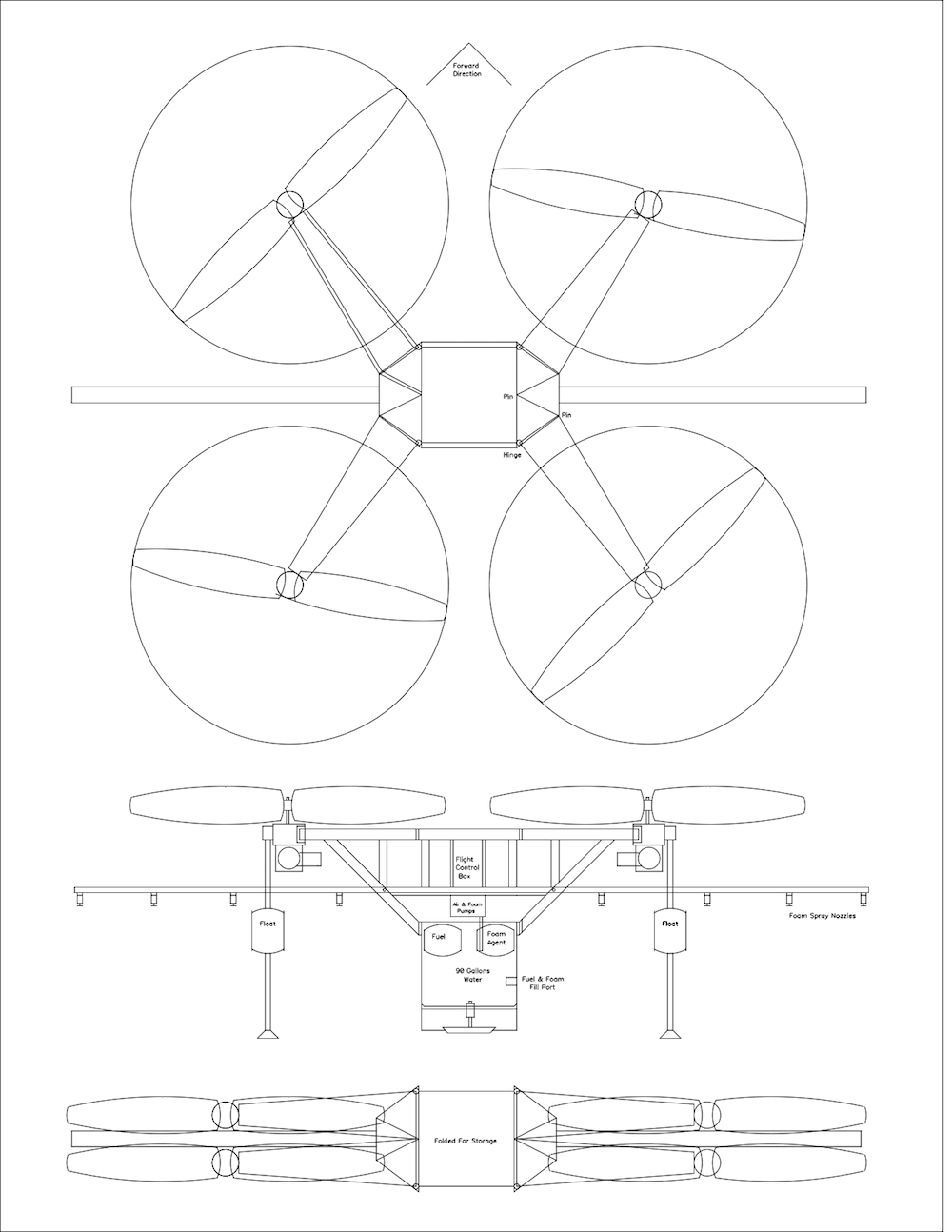I am designing a drone system that works as a bucket brigade that will carry and deliver a mixture of chemical foaming agent mixed with water to create fire suppression foam or products like Phos-Chek. The system is mostly autonomous using GPS mapping coordinates delivered to the drones by mesh network. The system is targeted at wild fires in grass or forest lands. Currently forest and grass land fires are fought with ground forces and aerial equipment. So the risk of life is great and the equipment is expensive both in initial investment and long term upkeep. Fire fighters are at risk of smoke inhalation and heat exhaustion. With the “Drone Bucket Brigade” system, no fire fighters need be on the ground. The fire is fought from a distance using GPS mapping software. With enough drone aircraft the fires will be stopped much quicker than traditional methods.
The cost of aerial firefighting equipment is more than $250,000,000 each year. This system could dramatically cut the cost, speed up the process, and save health and the lives of firefighters. At an individual cost in the $10,000 range, 50 drones should be about the same cost as one manned aircraft and refueling is quicker.
Each drone uses 4each, 50hp high performance 2 stroke racing engines. Each engine drives a planetary gearbox which reduces the engines RPM and supports the 10 foot rotor. Each rotor must be able to lift at least 400 lbs. The weight of the payload, 90 gallons of water, 5 gallons of foam chemical, 5 gallons is about 800 lbs. The engine, control system, aluminum air frame, and tanks should be approximately 400 lbs. Total filled weight will be approximately 1200 lbs. The design is foldable for more efficient storage. A single drone can be stored in a 25 x 3 foot space.
The field service system is a modified semi-box-trailer, with landing pads on the top of the trailer and access doors positioned in the roof. Landing pads have positioned LED lights that strobe a coded sequence that the drone can decode and adjust its flight to land quickly and precisely. Once securely landed the drone can be safely fueled and resupplied with foam. Each drone can be refilled in less than 2 minutes on the landing pad. It is possible to have two landing pads per semi-box-trailer. Water is supplied at a different location examples are ponds, lakes, or a temporary filling sight. A flapper door in the bottom of the drone tank allows quick tank filling. One gallon of foam concentrate is mixed before spray time to make a 1% solution. Each drone can fill and dump 5 times before returning to the re-supply Truck. Foam is 5 times more effective than water alone.
This idea is still in the design mode so some of the value listed here will increase of decrease as the design evolves.
Like this entry?
-
About the Entrant
- Name:Ray Simmons
- Type of entry:individual
- Software used for this entry:CAD
- Patent status:none





